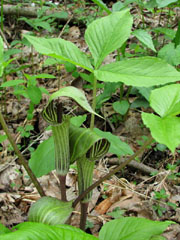

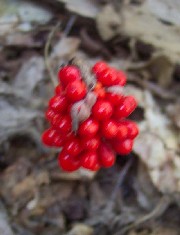
Jack-in-the-Pulpit, Arisaema triphylum:
Location: G. Richard Thompson W.M.A., VA. Green Berries
Location: Ramsey's Draft Wilderness, GWNF, VA. Ripe
berries (The leaves have died back.). Location: BFT, PA.

False Hellebore (Veratrum viride): In the Lily
family. Green, star-shaped, hairy flowers on a stalk. Grows
in wet areas. Foilage and roots are poisonous. Location:
Gunpowder SP, MD. Photo by Ken Clark. |
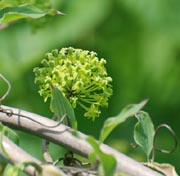
Carrion -
Flower (Smilax herbacea): Green vine with broad,
veined leaves. Smells like rotting flesh. You'll usually
smell it before you see it. Blooms May - June. Photo by
Anita Mueller.
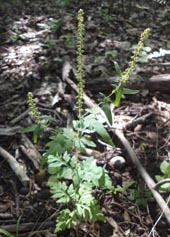
Ragweed (Ambrosia
artemisiifolia): The yellow pollen from the
inconsequential green flowers is the cause for misery for
millions of allergy sufferers.
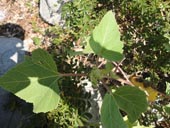
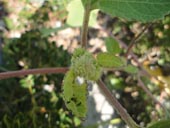
Sea-burdock
(Xanthium echinatum):Large, roughly maple to arrow
shaped leaves. Flowers surrounded by bur capsules. Location:
Downs Park, MD. |
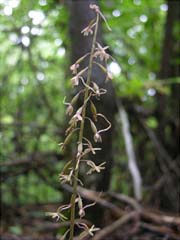
Cranefly Orchis (Tipularia discolor): Green-brown
flowers on a leafless stalk. Grows in swampy areas. A single
broad, lanceolete leaf sprouts in the fall and winters-over
to wither away in the spring. Location: Jug Bay, Patuxent
River, MD. Photo by Ken Clark.
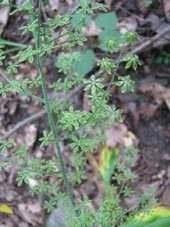
Bunchflower
(Melanthium virginicum): Creamy white flowers at
first turning green or purple. Narrow basal leaves. Meadows,
wet thickets. Photo by Dimitri Tundra.
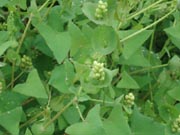
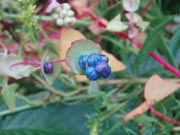
Mile-A-Minute (Persicaria
perfoliata): An agressive invasive alien vine as the
name implies. Quickly covers native plants. Location: Morgan
Run N.E.A. |
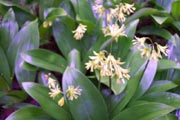
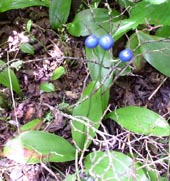
Yellow
Clintonia (Clintonia borealis): In the lily family.
stalk rises above waxy, green leaves with 6 green/yellow
bell-shaped, nodding flowers at the top. Gives rise to blue
berries. Location: Big Beechy Tr, Cranberry Wilderness, MNF,
WV. Berry photo by Dimitr Tundra.
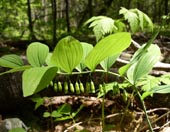
Smooth
Solomon Seal (Polygonatum biflorum):
Pairs of
green/yellow flowers hanging below alternating leaves.
Woods, thickets. Photo by Dimitri Tundra.
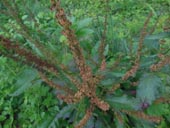
Curled Dock
(Rumex crispus) Note the curly leaves. Found in fields and
waste places. Photo by Dave Bennick. |
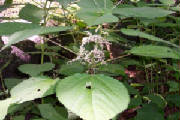
Stinging Nettle (Urtica
gracilis): Grows to 4 feet, often shorter.
Small hair-thin needles on the bottom side of the leaves
will leave you itching if you come in contact with it.
Location: all over the SNP.
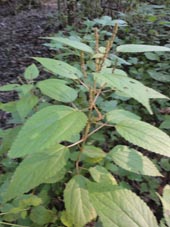
False
Nettle (Boehmeria cylindrica): Leaves narrower than
Stinging Nettle. Stinging hairs absent. Green flowers
supported on upright stems.
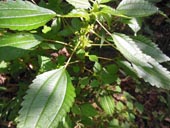
Cleaweed (Pilea
pumila): Nettle-like in appearance bur w/o stinging
hairs. Notice the three deep parallel veins in the leaves.
Fewer teeth than the previus two species and they are
rounded. Photo by Dave bennick. |

